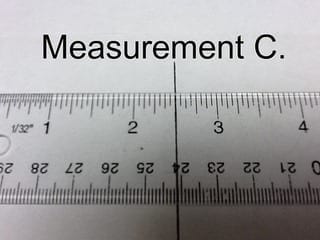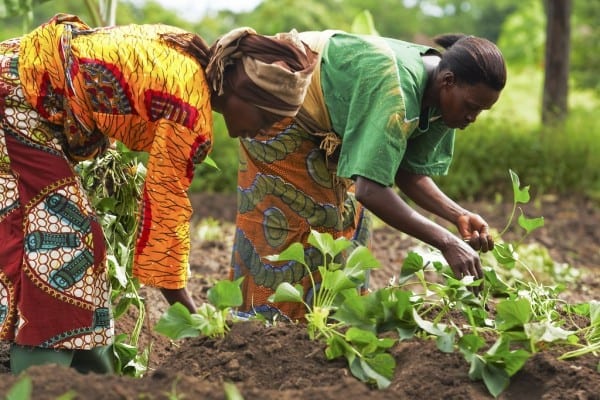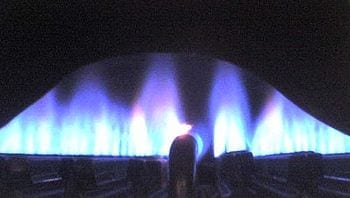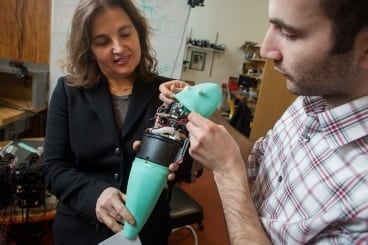
A University of Southampton researcher has helped to develop a wireless network of sensors that is set to revolutionise soil-based salinity measuring.
Dr Nick Harris, from Electronics and Electrical Engineering, worked with a group of professors from the University of Western Australia (UWA) to produce the revolutionary sensor that can carry out non-destructive testing of soil samples.
The sensor is capable of measuring the chloride (salt) in the soil moisture and linking up with other sensors to create a wireless network that can collate and relay the measurement readings. The network can also control the time intervals at which measurements are taken.
The sensor is placed in the soil and measures the chloride levels in the soil moisture in a non-destructive way. These chloride levels make up a high proportion of the overall soil salinity.
Dr Harris says: “Traditionally, soil-based measurements involve taking samples and transporting them to the laboratory for analysis. This is very labour and cost intensive and therefore it usually means spot checks only with samples being taken every two to three months. It also doesn’t differentiate between chloride in crystallised form and chloride in dissolved form. This can be an important difference as plants only ‘see’ chloride in the soil moisture.
“The removal of a soil sample from its natural environment also means that the same sample can only be measured once, so the traditional (destructive) method is not suited to measuring changes at a point over a period of time.”
The new sensors are connected to a small unit and can be ‘planted’ in the ground and left to their own devices. The limiting factor for lifetime is usually the sensor. However, these sensors are expected to have a lifetime in excess of one year. The battery-powered unit can transmit data and information by short range radio, Bluetooth, satellite or mobile phone network, as well as allowing data to be logged to a memory card to be collected later.
The novel device allows up to seven sensors to be connected at a time to a single transmitter allowing multi-point measurements to be simply taken.
Dr Harris adds: “These soil-based chloride sensors can benefit a wide range of applications. Large parts of the world have problems with salt causing agricultural land to be unusable, but the new sensors allow the level of salt to be measured in real time, rather than once every few months as was previously the case.
“At plant level, probes can be positioned at continuous levels of depth to determine the salt concentration to which roots are exposed and whether this concentration changes with the depth of the soil or in different weather conditions. We can also measure how well a plant performs at a particular concentration and change the salt content for a few days and observe the effects.
“On a bigger scale, sensors could be placed at different locations at catchment scale to observe any changes in the level of salinity within a field over time, having a direct impact on irrigation strategies. We have already been able to make some interesting observations on real world chloride concentration changes over just 24 hour periods, illustrating the dangers of relying on single point, single time measurements.”
The Latest on: Soil-based salinity measuring
[google_news title=”” keyword=”Soil-based salinity measuring” num_posts=”10″ blurb_length=”0″ show_thumb=”left”]
via Google News
The Latest on: Soil-based salinity measuring
- Soil Testing Time-Saver Predicts Key Soil Health Characteristicson May 14, 2024 at 10:28 pm
The newly developed prediction model can help add information about the soil's properties, which can guide fertilization, irrigation and herbicide decisions.
- Verde Announces Q1 2024 Resultson May 14, 2024 at 8:54 pm
Verde's Q1 2024 results were affected by adverse climate conditions, which reduced overall fertilizer demand in Brazil. This contrasts with Q1 2023, which benefitted from record potash prices and ...
- Two small NASA satellites will measure soil moisture, volcanic gaseson May 2, 2024 at 11:10 am
Two NASA pathfinding missions were recently deployed into low-Earth orbit, where they are demonstrating novel technologies for observing atmospheric gases, measuring freshwater, and even detecting ...
- How NASA Spotted The Effects Of El Niño From Spaceon April 27, 2024 at 4:15 am
The data the researchers used to study the oceans was collected from missions like Aquarius, an early sea surface salinity measuring satellite ... Space Agency's Soil Moisture and Ocean Salinity ...
- Everything You Need to Know About Hydroponic Gardeningon March 12, 2024 at 5:00 pm
in less space than traditional soil-based gardens. This means if you live in a tiny apartment or don’t have an outdoor area, you can still grow fresh food, such as leafy greens and herbs.
- Current Projectson September 24, 2023 at 7:58 am
and turfgrass damage The Pennsylvania State University Integrated Turfgrass Management 2023-35-802 Comparing the effects of subsurface drip irrigation and soil moisture sensors with ET-based ...
- Six innovations that can help feed the worldon May 9, 2023 at 2:24 am
director general of the International Center for Biosaline Agriculture (ICBA), a not-for-profit research organization based in Dubai. One solution is to grow crops that thrive in salty soil.
- Comparing Cheap Capacitative Soil Moisture Sensors With Commercial Sensorson February 1, 2023 at 5:56 am
To make a long story short, the commercial system by Hunter (Soil-Clik) appears to be a tensiometer-based system that uses the pressure produced by moisture intrusion into the measurement column.
- A Capacitive Soil Sensor Hack For Lower Voltage Supplieson July 26, 2019 at 7:03 pm
A frequent beginner project involves measuring soil moisture levels by measuring its resistance with a couple of electrodes. These electrodes are available ready-made as PCBs, but suffer badly ...
- Soil erosion controlon September 27, 2016 at 8:32 pm
Soil erosion is a major worldwide threat to agro-ecosystem sustainability and land productivity. Fallout radionuclides and stable isotopes are used to measure magnitudes and sources of soil erosion, ...
via Bing News











